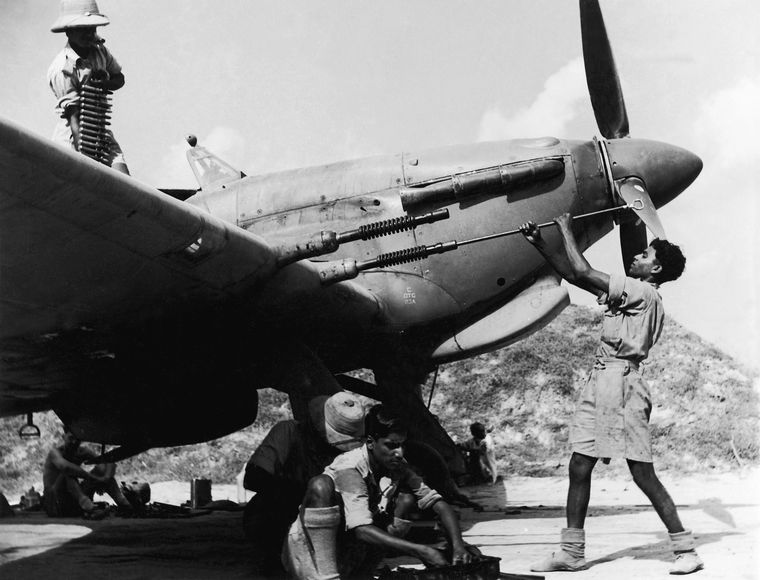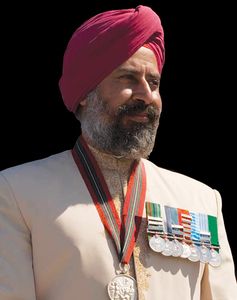UNLIKE WORLD WAR I, which was primarily an army affair as far as India was concerned, World War II saw the active participation of all three Indian fighting services.
Both the Indian Air Force (IAF) and the Indian Navy were fledgling services when the war broke out. The IAF came into existence on October 8, 1932. The Royal Indian Navy (RIN) evolved from the Indian Marine founded in 1612, undergoing a series of transitions till it was reconstituted as a combat service on September 8, 1934.
The outbreak of the war gave a great fillip to the growth of the Indian armed forces. The IAF and the RIN both came into their own as a result of the wartime expansion. Both services used a system of ‘volunteer reserves’, akin to the present Territorial Army, as the nucleus of their expansion. The IAF Volunteer Reserve (IAFVR) in particular formed the basis of the IAF Coastal Defence Flights (CDFs), which grew into regular IAF squadrons as the war progressed.
While officer commissions into the RIN were open to both Indians and Europeans alike, the IAF was the first truly ‘Indian’ service. Only Indian nationals were commissioned into it as officers or recruited as airmen, although in the early years a number of Royal Air Force personnel served in it on attachment. The ratings (sailors) of the RIN were recruited from all over India, but predominantly from Punjab and Konkan, while a large number of Bengali lascars served on board merchant marine ships.
In the IAF, the ground crew were initially recruited on an all-India basis as ‘Hawai Sepoys’. But soon after the war began, the RAF rank structure was adopted by the IAF as well. The senior-most Hawai Sepoy, Harjinder Singh, was one of the early proponents of the ‘Make in India’ policy. He rose to be the first AOC-in-C (air officer commanding in chief) of the IAF’s Maintenance Command after independence.
India’s commanding geostrategic location ensured that it played a pivotal role in the Allied war effort in the Middle East and southeast Asia. India’s defence was no longer confined to its national borders; its frontiers were seen to lie in Singapore and Egypt. Apart from defending the country’s 5,000 miles of coastline, the RIN had to protect all sea routes in the Indian Ocean.
In the early stages of the war, it was deployed to keep the Red Sea safe for the passage of troopships and supply vessels between India and the Middle East. It succeeded in this task despite sporadic Italian attacks. The RIN later took part in the operations against Italian East Africa and in a brief campaign in Iran. After the entry of Japan into the war, the RIN was increasingly built up. By 1944, it was 20 times larger in terms of ships and men than in September 1939.
In November 1942, one of its ships, the HMIS Bengal, a Bathurst-class minesweeper, fought an epic battle against two Japanese raiders on its maiden voyage in the Bay of Bengal. Its operational duties in the war against Japan included convoy escorts, anti-submarine patrols, constant minesweeping and collaborating with other services operating on the Burma seaboard.
The IAF began the war with a single squadron equipped with antediluvian Westland Wapiti biplanes. It initially took over ‘watch and ward’ duties from the RAF on India’s rugged mountainous North-West Frontier. Simultaneously, five IAFVR-CDFs were formed in major coastal cities.
IAF pilots won 22 Distinguished Flying Crosses (DFCs) during the war. One of them, the indomitable K.K. “Jumbo” Majumdar later became the only Indian pilot to earn a bar to his DFC while flying reconnaissance missions over Normandy prior to the ‘D-Day’ landings.
IAF personnel saw service as far afield as Occupied Europe and Australia, but by far its most important theatre of operations was Burma, where it flew more than 16,000 sorties involving more than 24,000 operational flying hours. In recognition of its contribution towards victory, the service was bestowed with the prefix ‘Royal’ in March 1945, becoming the Royal Indian Air Force.
The author is secretary and editor, USI Centre for Armed Forces Historical Research.




